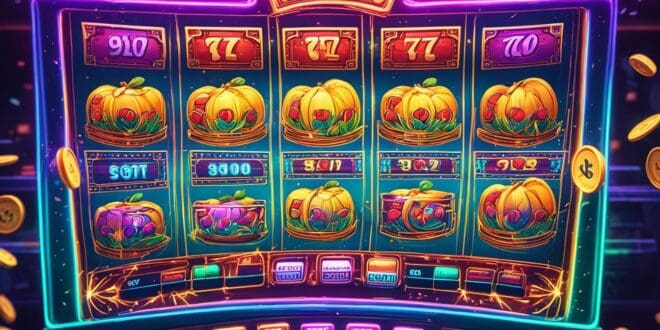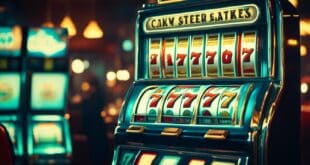For countless gamers and curious minds, the inner workings of casino slot machines remain shrouded in enigma. The flashing lights, enticing sounds, and the thrill of the game are all driven by an underlying sophistication of technology and mathematics. To demystify how these captivating machines operate, we delve into the core of slot machine algorithms and the intricate system of gaming odds that determine the outcome of each play.
At the heart of the casino experience, slot game mechanics form the foundation for the adrenaline rush associated with the chance of a win. With every pull of the lever or press of the button, players are engaging with a complex combination of technology and randomness. Understanding how slot machines work is essential for appreciating their allure and the fairness implied in their design that keeps the excitement of gaming alive.
The Evolution from Mechanical to Digital
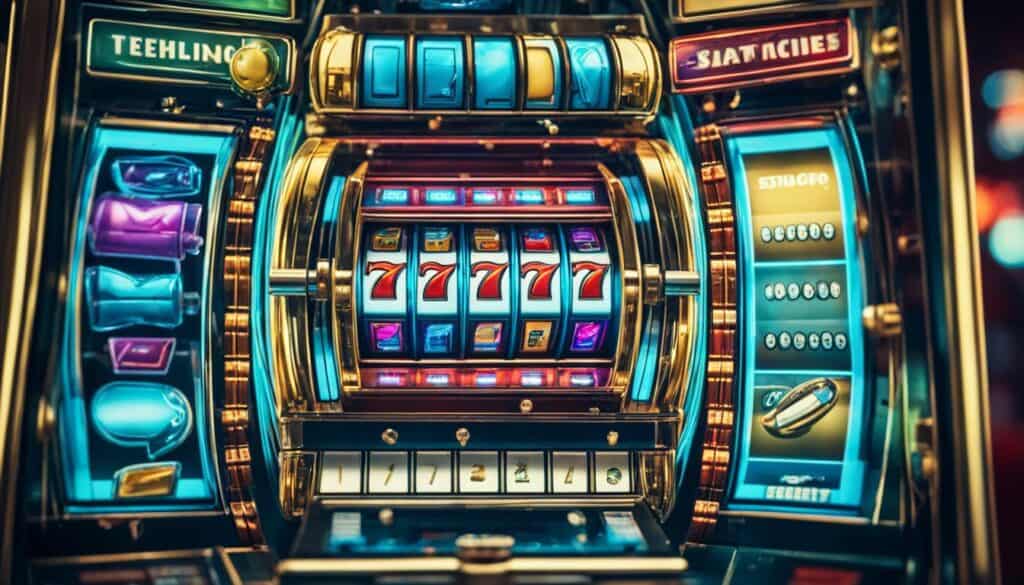
The journey of slot machines from their humble beginnings to the digital powerhouses we know today marks a significant chapter in gambling history. Once rudimentary devices with a simple, mechanical heart, these gaming staples now boast sophisticated digital slot technology that facilitates an array of features and enhancements. The evolution of slot machines reflects not only technological progress but also changes in player preferences and industry standards.
From One-Armed Bandits to Modern Marvels
The classic one-armed bandit—the nickname for the earliest versions of the slot machine—was a fixture in bars and saloons, with its mechanical arm setting the reels in motion. These machines were entirely mechanical, relying on springs and gears to randomly distribute the symbols. However, as digital technology began to pervade consumer electronics, slot machines too saw a transformation.
- Introduction of electromagnetic mechanisms to improve gameplay reliability
- Incorporation of lights and sounds for a more engaging player experience
- Transition to video slots featuring screen-based digital reels instead of physical ones
The Shift from Mechanism to Microprocessor
With advances in computer technology, the mechanical slot mechanisms gave way to microprocessor-driven machines, revolutionizing the way slots functioned. No longer bound by the physical limitations of mechanical devices, slot machines could now offer a wider range of features and payouts.
- Implementation of Random Number Generators (RNGs) for unbiased and unpredictable results
- Introduction of complex game themes and multiple paylines
- Expansion of bonus rounds and interactive features, thanks to digital technology
This transition from the mechanical to the digital has paved the way for a more immersive and dynamic gaming environment, where the only limit is the imagination of game developers. Today’s digital slot technology allows for a seamless fusion of entertainment with the chance of winning, providing an ever-evolving platform for enjoyment and potential financial reward.
A Programmer’s Perspective – How Slot Machines Work

Understanding the intricacies of slot game development provides invaluable insight into the captivating world of casino entertainment. Slot machines, whether stand-alone units in a brick-and-mortar casino or online simulations, all undergo rigorous game design and programming. The goal is simple: to recreate the unpredictability and thrill of traditional mechanical slots in a digital format.
Programming slot machines involves a meticulous process where each symbol is digitally encoded with a unique numeric value. This setup is pivotal for the Random Number Generator (RNG) algorithms that underpin the game’s core. Slot machine programmers specialize in crafting these complex algorithms to ensure that the likelihood of landing on any given symbol is weighted, much like the physical reels of yesteryear’s fruit machines.
The calculated uneven probabilities of these algorithms are essential for fostering true randomness within the game, a characteristic vital for both player trust and regulatory compliance. This allows for an expansive range of game outcomes, not limited to linear win or loss scenarios, but enriched with various bonus features, progressive jackpots, and interactive elements—all hallmarks of modern slot game design.
- Game design considerations for engaging player experience
- Programming balanced RNG algorithms for fairness and compliance
- Creating captivating audio and visual effects that enhance gameplay
- Ensuring versatility in game features to cater to diverse player preferences
The art of slot game development is as much about imagination and creativity as it is about technical expertise. Programmers and game designers work in tandem to create not just a game, but an experience—one that resonates with players and stands the test of time.
Understanding Random Number Generators (RNG)

The pulse of modern gaming mechanics pulsates through a foundational technology known as Random Number Generators, or RNGs. These sophisticated systems are the architects of chance within digital gaming, providing the illusion of unpredictability and chance akin to their mechanical forebears.
The Science Behind RNG Technology
At the heart of RNG technology is the core principle of randomness, essential for games of chance and pivotal in ensuring each player’s experience is fair and not predetermined. The design of these systems is complex, but their purpose is clear: to generate a sequence of numbers devoid of any discernible patterns.
The implementation of RNG technology within gaming machines is a testament to the software’s engineering, which constantly harnesses entropy to produce results that approximate true randomness. This RNG application ensures that players face a fair gaming environment where chance reigns supreme.
Differentiating Between True RNG and Pseudo-RNG
In the realm of random number generation, two distinct classifications emerge: true RNG and pseudo-RNG. The former, true RNG, is the hallmark of randomness, often harnessed through physical phenomena such as atmospheric noise or thermal variations. Its unpredictable nature makes it a gem in security-driven applications that necessitate an element of the unforeseen.
Conversely, pseudo-RNGs are the artisans of the gaming world, skillfully creating an illusion of randomness through deterministic algorithms. Although not truly random, since they ultimately follow a programmable pattern, they adequately fulfill the need for integrity and fairness within the sanctuary of video slot machines.
The difference in these RNG types lies not in the experience of randomness they provide—the end result for the user is often indistinguishable—but in their internal operational mechanisms and their deployment based on the required level of unpredictability.
Breaking Down How Casino Slot Machines Work
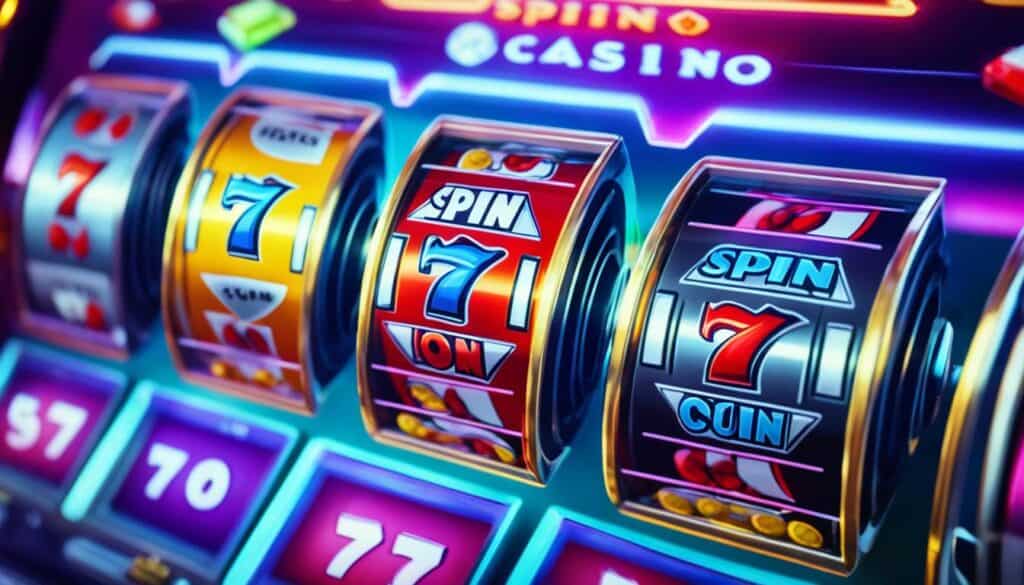
Delving into the core components of casino slot machines illuminates the intricate dance between chance and strategy. The mechanics behind these captivating machines intertwine simplicity with a complex system designed to sustain fair play and excitement.
The Role of Reels and Symbols
At heart, the essence of slot machine appeal lies within the spinning reels. Each gaming reel is an independent entity, teeming with a variety of symbols, each carrying different values and potential for forming winning combinations. When these symbols come to rest in alignment, forming a visual symmetry along an active slot payline, they herald a win for the player.
- Traditional symbols that have become iconic in the slot world.
- Special symbols, like wilds and scatters, aimed at enhancing game dynamics.
- Animated symbols, often found in video slots, adding an extra dimension of enjoyment.
The Significance of Paylines and Betting Options
Slot paylines are the architects of wins, carving out the patterns that symbols must echo to unlock payouts. The more paylines a player chooses to activate, the greater their chances of winning, albeit at an increased cost per spin. Betting in slots is a balanced act of risk and potential reward, as players weigh the possibility of higher payouts against the probability of winning.
- Selecting the number of paylines for increased win potential.
- Adjusting bet size based on individual playing style and bankroll management.
- Understanding the role of minimum and maximum bet thresholds.
Incorporated within this elegant system is the Random Number Generator (RNG), the enigmatic engine that powers the unpredictability and fairness of the game. Every spin hinges upon this algorithm, which indiscriminately chooses the resting place of each reel, and effectively, the fate of the game at that moment.
The allure of the casino slot machine is as timeless as it is enthralling. Understanding the bedrock principles of casino slot machine mechanics, from gaming reels to betting choices, adds a strategic depth to the element of chance, thus enriching the gaming experience for enthusiasts everywhere.
Slot Machine Myths Debunked
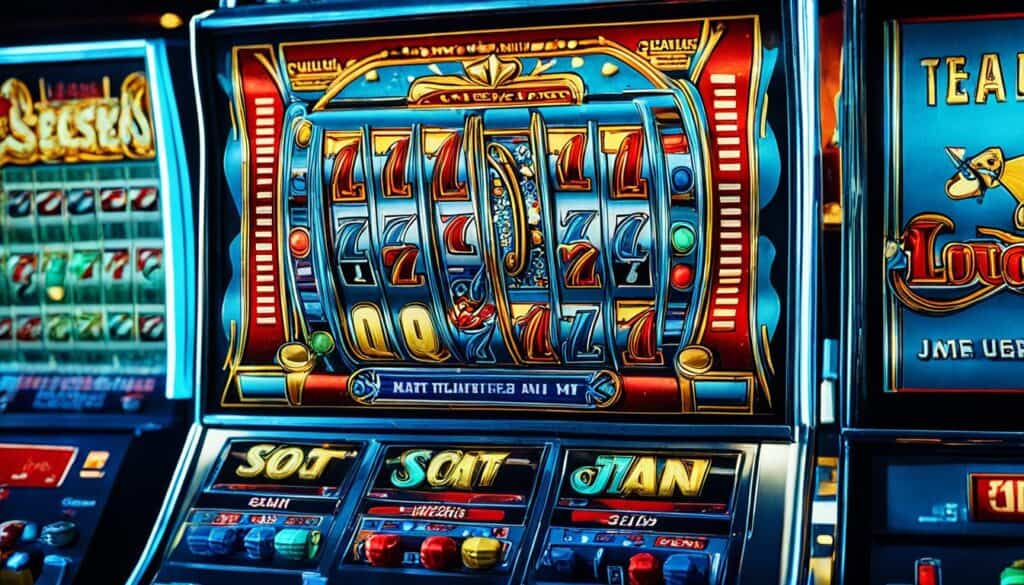
Despite the widespread popularity of slot machines, a number of misconceptions still cloud the minds of many players. The myths that permeate the gaming industry often create false hopes and misunderstandings about the ways slots operate. Here, we demystify some of the most common slot machine myths and shed light on the truths hidden behind the reels of chance.
Exploring Common Misconceptions
Many players hold onto the belief that slot machines go through ‘hot’ and ‘cold’ streaks, but the reality, governed by Random Number Generators (RNGs), is that each spin is an independent event. The idea of a machine being ‘due’ for a win after a dry spell is another fallacy; with each spin isolated from the last, the odds remain unchanged.
- Myth: Slot machines can be due for a payout after consecutive losses.
- Reality: Every spin is isolated and has the same chance of winning or losing, regardless of previous outcomes.
- Myth: If a slot machine hasn’t hit a jackpot in a while, it’s more likely to do so soon.
- Reality: Progressive jackpots grow larger over time, but this does not influence the probability of hitting the jackpot on the next spin.
- Myth: You can detect patterns that indicate a win is imminent.
- Reality: RNGs ensure complete randomness, making pattern prediction or recognition impossible.
Can You Outsmart a Slot Machine?
While strategies promising to outsmart slot machines abound, they stand no chance against the non-discriminatory, algorithm-driven operations of modern slots. The impartiality of RNGs makes it impossible to influence or predict the outcome of spins. Players are better served understanding the role of chance and randomness in these games, rather than seeking ways to beat the system.
- Understanding RNGs is crucial for acknowledging the role of chance.
- Recognizing that no system or strategy can change the game’s outcomes.
- Accepting that gaming misconceptions are often driven by a lack of knowledge about slot mechanics.
Dispelling slot machine myths not only helps players approach the game with realistic expectations but also enhances their overall gaming experience by embracing the serendipity and unpredictability that make slot machines so entertaining.
The Secrets Behind Slot Machine Algorithms

Understanding the intricacies of slot machine algorithms provides insight into the complex mechanics that drive both the enigma and appeal of these captivating casino games. These intricate formulas are integral in defining the conduct of each game, incorporating advanced mathematical models that govern slot behavior patterns and ensure gaming fairness.
How Algorithms Dictate Slot Behaviors
Every spin on a slot machine is governed by underlying algorithms that are designed to produce random sequences, making sure that no discernible pattern can be exploited. These algorithms are the unseen directors of the game, carefully calibrated to manage the odds and keep the RTP, or Return to Player rate, consistent with the game’s design. They ensure that the thrill of chance remains ever-present in the gameplay.
Ensuring Fairness and Unpredictability
At the heart of slot machine design is the commitment to fairness. Regulated casinos deploy slot machine algorithms that have been rigorously tested for their randomness and fairness. This not only protects the integrity of the game for the player but also ensures that the casino can confidently maintain the balance between frequent small wins and the life-changing jackpots that keep players returning for the roll of the reels.
- Random Number Generators (RNG) uphold the unpredictability of each spin.
- Algorithms calibrate the frequency and size of payouts, reflecting the game’s programmed statistics.
- Regulatory bodies routinely audit and verify the fairness of slot machine algorithms to maintain trust.
Realism in Slot Machine Payouts
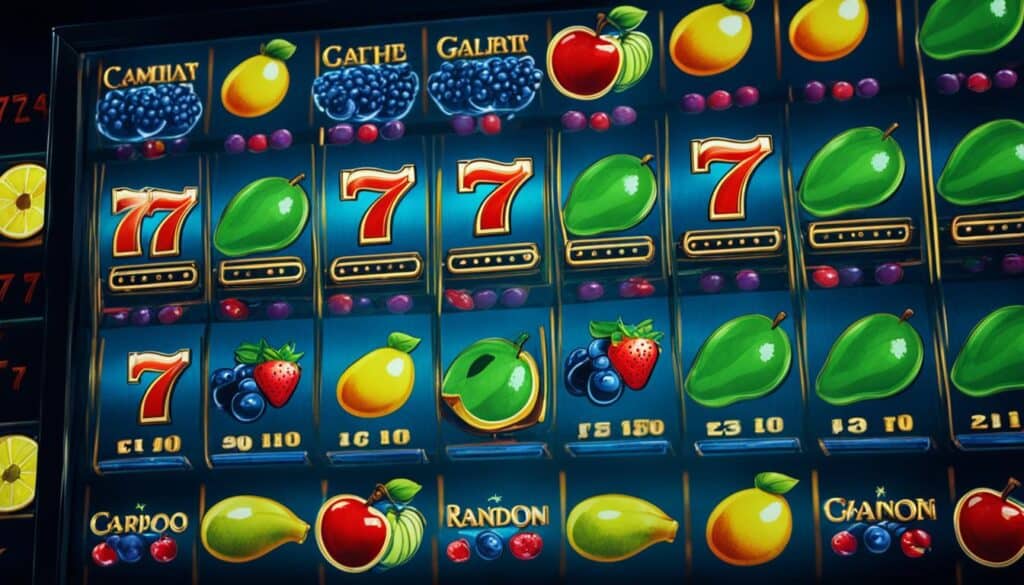
The expectation of hitting a jackpot or securing a significant payout keeps players returning to the allure of slot machines. Understanding slot machine realism involves recognizing the carefully engineered balance between randomness and the calculated economics of slot games. Players seek payout realism in slots, which hinges on the assurance that they are engaged in a fair game with genuine chances of winning.
At the core of this balance lies the Random Number Generator (RNG), the impartial digital arbiter of fate that ensures every spin is isolated from the last. Alongside RNGs, the payout algorithms are programmed to reflect an RTP (Return to Player) that encapsulates the concept of expected winnings over an extended play period. These RTP percentages signify a player’s theoretical return, instilling a sense of trust and fairness in the casino experience.
- Each spin’s outcome corresponds to a set of predetermined odds, providing that element of chance.
- Over time, the machine’s payout will approach its theoretical RTP, reinforcing payout realism.
- Though individual sessions can see significant swings, long-term engagement invariably aligns with expected winnings.
As such, the reliability of slot machine payouts is more than a matter of luck; it’s a complex interplay between player psychology, gaming technology, and legislative oversight ensuring that all spins are fair and unscripted. This dynamic fosters a gaming environment where players can enjoy the anticipation and thrill of the game, trusting in the intrinsic payout realism of every slot machine they choose to engage with.
How Does a Slot Machine Work: The Mechanics of a Spin
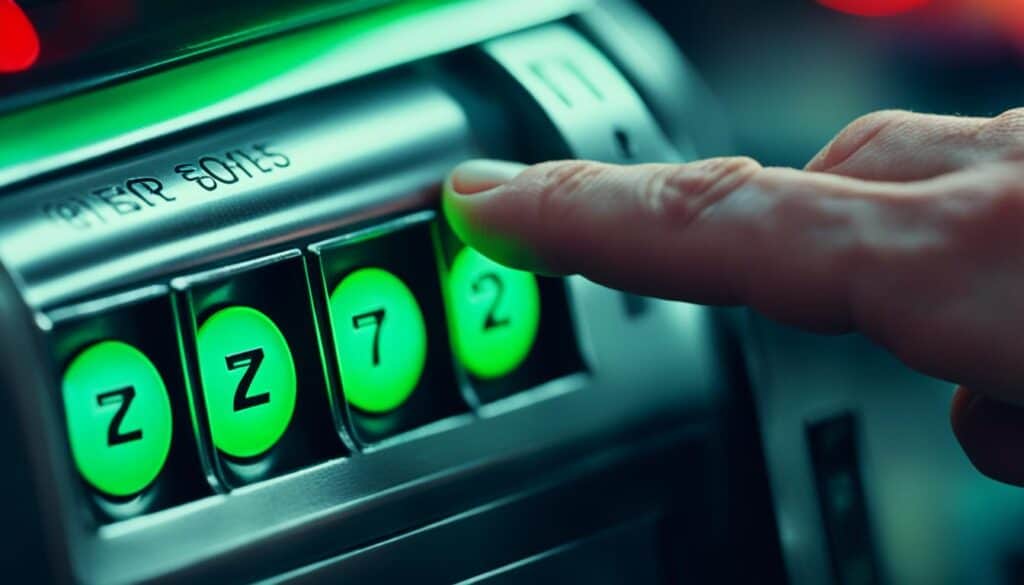
Understanding the intricacies of slot machine operation provides insights into the exciting moments that unfold after pressing the spin button. The momentary anticipation that builds as reels swirl and symbols dance is governed by a combination of advanced technology and psychological elements designed to captivate players.
From the Press of a Button to the Final Outcome
The process begins the instant a player presses the spin button. This seemingly simple action triggers the slot machine’s Random Number Generator (RNG), a pivotal component that swiftly calculates a random number sequence. This determines the symbols that will appear once the reels stop spinning. This quick calculation reaffirms that the outcome is set from the start, leaving no room for alteration once the spin is activated.
Visual and Auditory Effects in Outcome Display
The immersive experience of playing slots is greatly amplified by the visual effects in slots, which include the vibrant animations that celebrate wins or signify bonus rounds. These visual cues, paired with slot machine audio cues, work together to create a dynamic environment. It’s this combination of visual flair and auditory feedback that makes each spin an alluring spectacle, irrespective of the game’s outcome, and maintains a player’s attention for repeated engagement.
- The visual brilliance of a slot game often coalesces in a stunning display of flashing lights when a win occurs.
- Slot machine audio cues often mimic celebratory sounds, reinforcing the joy of a win and the potential for future success.
- Auditory feedback can also come in the form of themed music or soundtracks that maintain an immersive atmosphere.
These elements are crucial in slot machine operation, ensuring that each game offers not just a chance for monetary gain, but an engaging entertainment experience.
The Science of Slot Machines
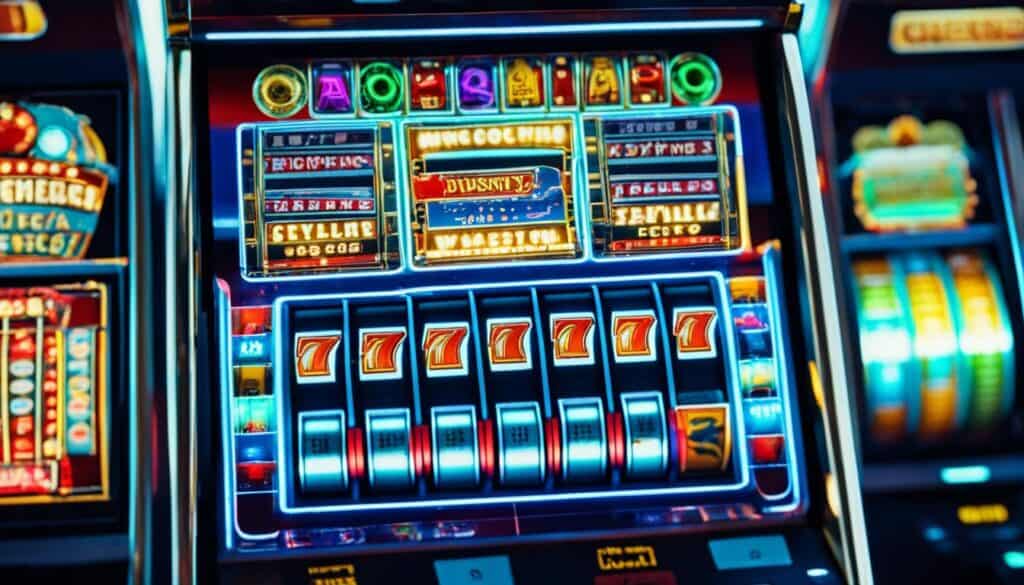
The intricate science of slot machines is a fusion of technology and human psychology, resulting in a captivating experience that keeps players coming back. Central to this are sophisticated algorithms capable of generating random sequences, thus ensuring fairness and unpredictability in algorithmic gaming. These mathematical foundations paired with the allure of chance and the excitement of potential rewards play a significant role in the gambling psychology that drives player behavior.
Slot machines are not mere games of chance; they are carefully engineered to engage and retain players through a combination of aesthetics, sound, and reward structures. The following elements highlight the science that transforms a simple spin into an enthralling activity:
- Random Number Generators (RNGs) ensure each spin is independent and outcomes are truly unpredictable.
- Colorful graphics and captivating themes stimulate the senses and enthrall players.
- Auditory signals, such as the sound of coins dropping or music, heighten excitement and signify winning.
- The psychological trigger of intermittent rewards sustains engagement and encourages continual play.
Together, these factors create a complex tapestry that is the modern slot machine—an amalgamation of entertainment, psychology, and scientific precision.
What Makes Slot Machines Addictive
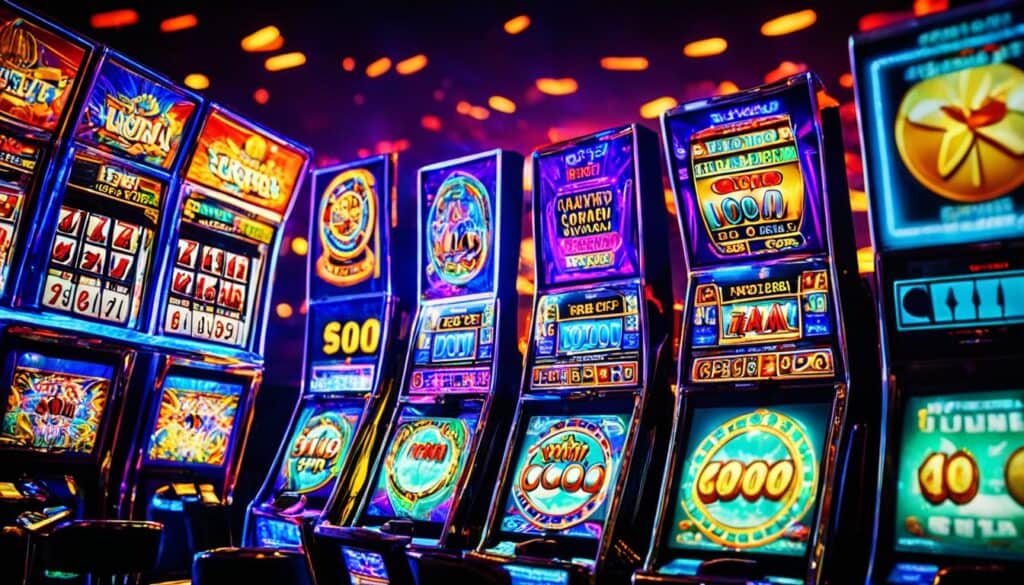
Understanding the intricacies of slot machine design reveals why they can fuel addictive behaviors in players. The captivating allure of these gaming devices lies in their expert combination of technology and psychology, engineered to tap into human desires and behaviors. It’s this powerful blend that transforms a simple game of chance into a potentially compulsive activity for many.
Psychological Triggers in Slot Machine Design
The psychological aspect of slot machine addiction cannot be understated. Game developers are adept at utilizing various gambling triggers that stimulate the release of dopamine, a neurotransmitter linked to pleasure and reward in the brain. One common tactic is the near miss phenomenon, where players come tantalizingly close to winning, creating a sense of anticipation that encourages further play. Other design elements that serve as gambling triggers include:
- Lights and vibrant colors that captivate players’ attention and create an environment of excitement.
- Sound effects that signal wins, no matter how small, reinforcing the playing behavior.
- The illusion of skill or control that leads players to believe they can influence the outcome.
The Role of Intermittent Reinforcement
Another psychological concept at play is intermittent reinforcement, a schedule where rewards are delivered unpredictably. This can be more compelling than consistent rewards, as it exploits the thrill of the unknown and the pleasure of receiving unexpected wins. Slot machines exemplify this concept through:
- The random issuance of small payouts, keeping players in the game and hopeful for bigger wins.
- Occasional large jackpots, setting a high anticipation level that fuels the player’s desire to continue pushing the button.
- The implementation of bonus rounds and free spins, adding extra layers of random rewards that can occur at any time.
It’s this erratic schedule of reinforcement that makes slot machines particularly addictive, as players experience heightened levels of excitement and anticipation with each spin. The lack of predictability feeds into a cycle of continuous play, where the outcome is always uncertain, but the potential reward remains enticingly within reach.
Calculating the Chances of Winning on Slots
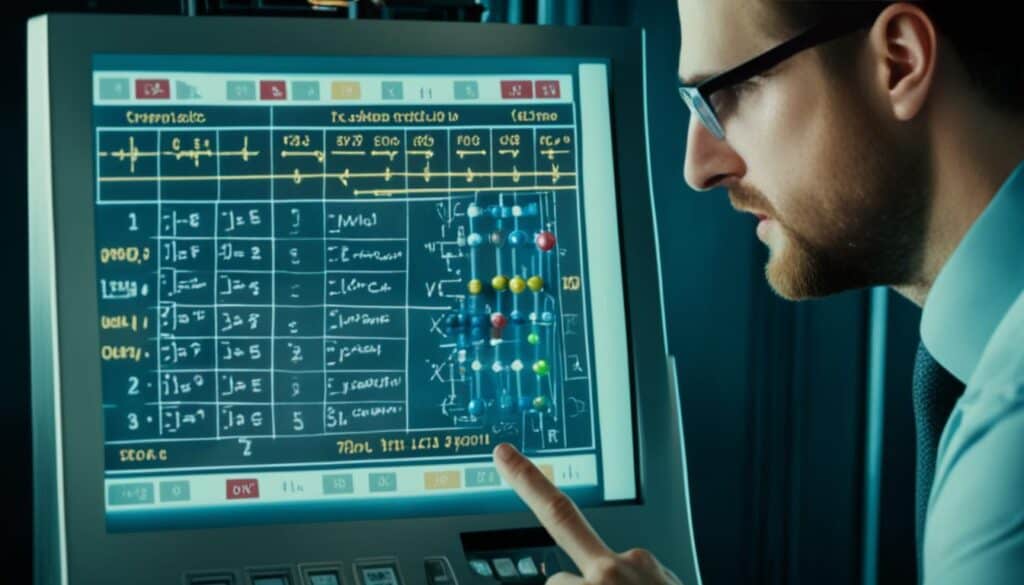
Understanding the nuances behind slot machine odds is crucial for any player hoping to increase their chances of winning. It’s not just about luck; it’s also about knowing how different factors like the RTP rate, house edge, payout frequency, and slot volatility work together to shape the gaming experience. By calculating chances on slots, the player can make informed decisions on where to place their bets, leading to a more controlled and potentially rewarding gaming session.
Return to Player (RTP) and House Edge Relevance
The RTP rate is a vital aspect of any slot machine, signifying the percentage of total bets that will be returned to players over time. A higher RTP indicates a better chance of winning in the long run. Conversely, the house edge represents the casino’s average profit from bets on a game. A lower house edge means the game is generally more favorable to the player. These two factors are intrinsic to understanding slot machine odds and can guide players toward games that offer higher potential returns.
Frequency of Payout and Volatility
How frequent a slot machine pays out and the nature of those payouts are greatly influenced by the game’s volatility. Slot volatility determines the risk involved in playing a particular game. Low volatility slots offer more frequent wins, but these are usually smaller in size—ideal for a conservative playstyle. On the other hand, high volatility slots tend to payout larger sums but less often, which could be attractive to players seeking big wins and willing to accept higher risk. Knowing the payout frequency and volatility of a slot can significantly aid in calculating chances on slots, ensuring players choose games that align with their risk tolerance and winning desires.
- To gauge slot machine odds, players should start by reviewing the RTP rate and house edge data, which is often publicly available.
- For calculating chances on slots, one can use the RTP to estimate the potential return over a lengthy play period.
- Understanding the relation between the RTP rate and the house edge can help balance the thrill and potential profitability of the gameplay.
- Assessing the payout frequency helps predict game patterns and how often one might expect wins.
- Awareness of slot volatility aids in setting appropriate betting strategies, whether aiming for regular small wins or sporadic large jackpots.
Navigating Through Slot Machine Varieties
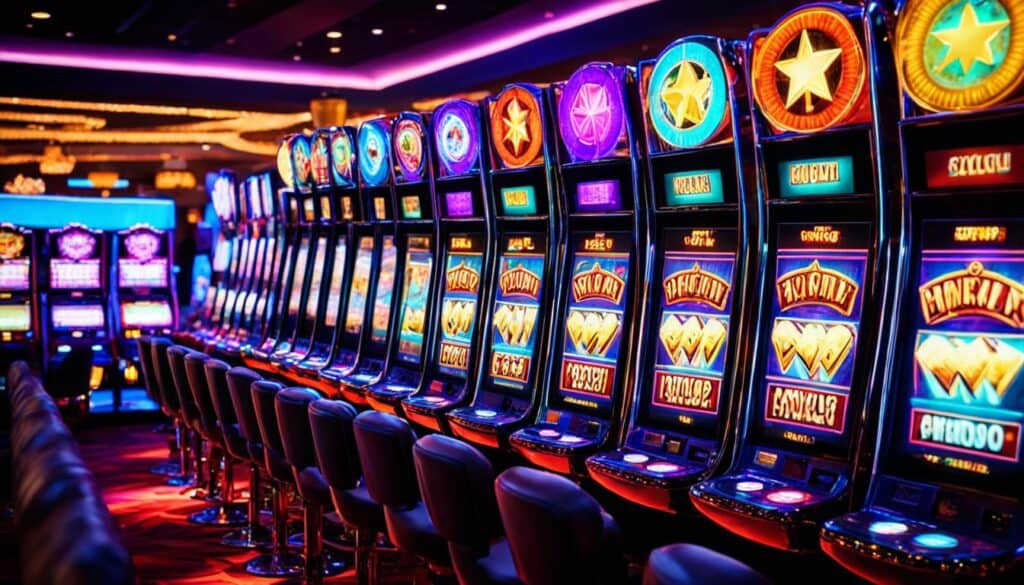
For both the casual player and the seasoned gambler, understanding the slot diversity in today’s casinos can be quite an adventure. There are numerous types of slot machines tailored to every preference and style of play, providing an exhilarating mix of entertainment and the potential for reward.
Understanding Different Types of Slot Machines
The gaming floor is lined with a plethora of slot machine types, each sporting different themes and functionalities. Let’s delve into the rich tapestry of slot machine options that appeal to a wide audience:
- Classic Slots – Often known for their nostalgic appeal, featuring simple designs, usually with three reels.
- Video Slots – Bringing games to life with intricate graphics, multiple paylines, and layered bonus features.
- 3D Slots – Offering an immersive experience with three-dimensional graphics and interactive gameplay.
- Fruit Machines – The quintessential slot experience with fruit symbols and basic game mechanics.
- Multi-Line Slots – Enabling a multitude of winning combinations with the option to bet on numerous paylines.
This variety caters to diverse preferences and playing styles, something that can be overwhelmingly positive for the gaming industry and its patrons.
Pros and Cons of Progressive vs. Fixed Jackpots
When it comes to jackpots, slot machines typically fall into two main categories: progressive jackpots and fixed jackpots.
- Progressive Jackpots – These jackpots incrementally increase as bets are placed across a network of machines, offering the tempting lure of life-changing wins.
- Fixed Jackpots – Offering a set jackpot amount that does not change regardless of the number of bets placed, they provide a stable target for players to aim for.
Progressive jackpots, while offering higher rewards, are usually less frequent in payouts compared to their fixed counterparts. Fixed jackpots, on the other hand, offer smaller but more regular wins, appealing to those who prefer a more consistent gaming experience.
Innovations and Future of Slot Machine Gaming
The casino landscape is continually reshaped by technological advances, and slot machine innovations remain a driving force behind this evolution. The future of slot gaming is poised for a significant transformation that will not only influence the mechanics of the games but also redefine player interaction. As we lean into a future punctuated by digital growth, the shift towards immersive and personalized experiences is evident, with emerging slot technologies leading the charge.
Emerging Technologies in Slot Gaming
Advanced technologies are propelling slot games into futuristic territory. Virtual reality (VR) is expected to break new ground in the realm of player engagement, offering a level of immersion that was previously unattainable. This, coupled with progressively more sophisticated graphics and sound effects, promises to amplify the sensory experience, captivating players like never before. The integration of artificial intelligence (AI) is predicted to streamline the customization of the gaming experience, catering to individual preferences and playing habits.
Anticipating Changes in Player Interactivity
As the dynamics of interaction evolve, the changes in player interactivity within the world of slot machines are likely to be marked by increased connectivity and engagement. With a focus on community and shared experiences, the development of interconnected progressive jackpots will lend a new layer of excitement to the thrill of the chase. Moreover, the elevation of the role player choices and strategies play in the gaming outcome hints at an emergent era in slot gaming—one that favors player agency and strategic immersion over simple chance. This trajectory indicates a compelling future, where the confluence of innovation and tradition will continue to thrive within the vibrant tapestry of casino entertainment.
 Online Gaming Circuit
Online Gaming Circuit
